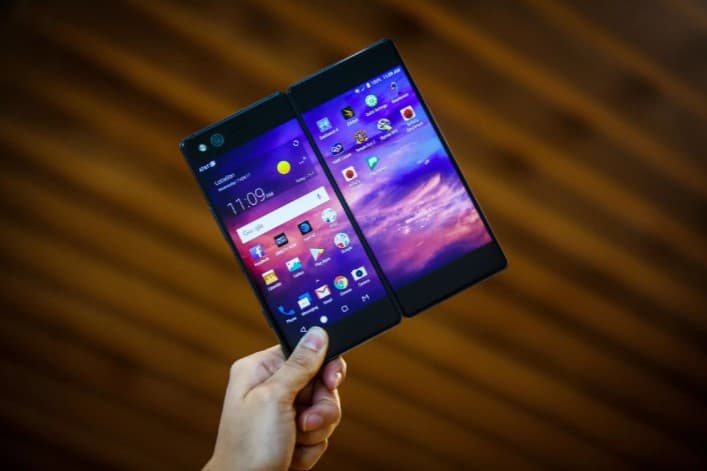
It’s an uphill battle though. Here’s what ZTE is blocked from accessing thanks to a Commerce Department denial order.
The reports of ZTE’s death are greatly exaggerated. Well, at least for now.
The fate of the Chinese maker of telecommunications gear has been up in the air since ZTE disclosed on Wednesday that it had shut down “the major operating activities of the company.” The closure followed a US Commerce Department denial order, which banned any American businesses from selling products or services to ZTE for the next seven years.
But ZTE, which is also the fourth-largest smartphone maker in the US on account of its budget options, isn’t throwing in the towel. The company had to shut down its operations to comply with the order, but it continues to talk with US government officials about a potential stay or reconsideration of the denial order, according to a person familiar with the situation.
“Ceasing operations does not mean we’re going away,” the person said, noting that ZTE has a cash reserve and could eventually tap into financing to stay alive.
The company is also pegging its hopes on broader discussions between US and Chinese officials in their bilateral trade talks — ZTE is expected to be a topic of conversation brought up on the Chinese side, the person said.
The denial order concerning ZTE, which experts have called a “death sentence” because it strips away access to critical US technology and hardware, is the latest hammer to drop on select Chinese vendors. Verizon and AT&T abandoned plans to sell smartphones from fellow Chinese company Huawei, and CNET first reported Best Buy would stop selling all Huawei products as well. The heads of the FBI and CIA also warned against buying phones from either company.
It also comes amid a broader escalation of tensions between China and the US over a looming trade war, including the threat of $150 billion in Chinese tariffs. The US and China are still trying to work out an agreement, with bilateral trade discussions happening this weekend.
How the denial order hurts ZTE
ZTE spent $2.34 billion on more than 200 US suppliers last year, acquiring components and software for phones and networking gear, the person said. Its largest suppliers are Qualcomm, Broadcom, Intel, Xilinx, SanDisk and Acacia Communications — ZTE paid each company at least $100 million.
A central debate has been whether ZTE could still have access to Google’s Android operating system, which powers all of its smartphones, like the dual-screen Axon M. The person said ZTE could still use Android itself, since it’s open source, but it would lose access to the Google Play app store. Even if ZTE built its own app store, it couldn’t hold US-made apps.
Also, the company wouldn’t get early access to Google’s newest Android releases or even security patches until they were released to the public. Google’s partners tend to get them early so they can be built into their latest phones.
Because most of its phones sold in the US are through local carriers like Verizon or T-Mobile, ZTE won’t be able to access their ability to update or patch existing phones. It also couldn’t run its phones through carrier testing, which is key to getting them in stores.
The lack of access to US technology has wider ripple effects. The ban hampers ZTE’s ability to maintain or build new networks in countries like India, Italy or Austria, where its wireless network equipment covers nearly half the population.
What did ZTE do?
This all stems from ZTE selling US-origin equipment to Iran. The company reached a settlement in March 2017 with the Commerce Department and Treasury Department for $1.19 billion and the promise to terminate several employees and punish others.
ZTE disclosed earlier this year that while it had gotten rid of several employees, the company hadn’t properly reduced the bonuses of some workers, or issued letters of reprimand. The inaction wasn’t consistent with a progress report ZTE issued in July. It’s because of those false statements that the Commerce Department decided to act.
There wasn’t a grand scheme to mislead the US government, the person said, blaming a process failure with human resources and the lack of follow-up by leadership. ZTE has since doled out the appropriate penalties.
Jacobson is skeptical about that the argument will sway the Commerce Department. The other problem is the appeal is reviewed by the same agency that first handed out the punishment, so the information won’t be seen by fresh eyes or another agency, he noted.
“Its options are limited,” he said.
When the Commerce Department alerted ZTE that it was considering the denial order, the company had asked for 45 days to investigate and provide a report about the failure, to be submitted April 30.
The denial order was issued April 15.
What’s next?
ZTE maintains it has the right to appeal, and it’s pursuing a temporary suspension of the denial order. Once it exhausts its administrative options, it may consider legal ones, the person said.
If the denial order remains, ZTE will begin looking at ways to swap out US suppliers for other international ones. The company will have to look on a case-by-case basis at how its different products could continue to exist while complying with the order, though it hasn’t begun to do this yet, the person said.
In terms of the potential damages, it’s unclear how bad this could get. The Commerce Department had the option of inflicting a $300 million penalty.
“I’m sure it’ll be in excess of that,” the person said.
That’s probably an understatement.
